Tulips are always fun to grow as they are available in so many colors and varieties. Growing a bunch of tulips in your garden with different colors can make your garden look stunning. But, despite providing all their requirements, it can be very disheartening to see tulips with short stems.
But why are your tulip stems short? How can you fix the same? Let’s find out.
The primary cause behind short stems in tulips is insufficient chilling of the bulbs. The bulbs need to be chilled before planting, and if the bulbs are planted late or experience warmer weather, then they won’t produce enough growth hormone resulting in short stems.
Other reasons behind short stems are improper watering, prolonged dry conditions, planting too late or too deep.
Also, some variety of tulips grows short stems.
If you want to know why your tulips grow short stems, read this article to understand all the reasons and how to prevent them.
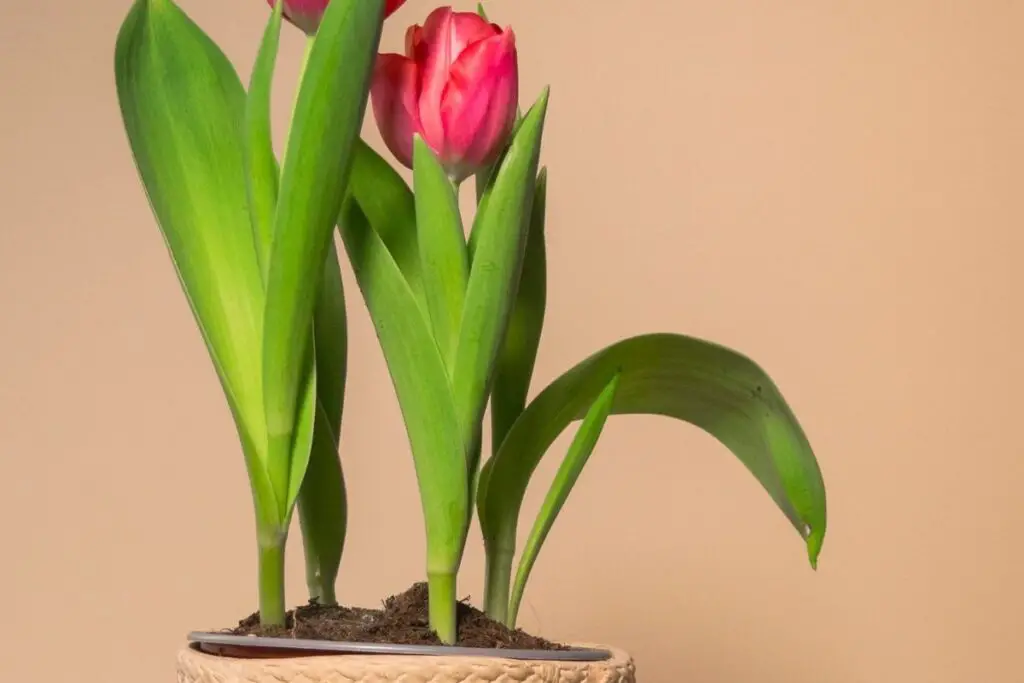
Why do tulips have short stems?
Tulips growing short stem is not something to be worried about unless there is any disease behind the problem.
The reasons are straightforward, stress-free, and even fixable. With little care and prevention, you can see the stems being in size they are meant to be.
Now, let’s investigate the causes behind tulips getting short stems and how you can encourage long stems.
Tulips are available in various species.
A widespread factor responsible for short stems in tulips is their variety. There are a lot of species available in tulips. This is the reason may be your tulips have short stems.
For example, the Darwin hybrid species have much taller stems compared to other tulip species. Their maximum stem size can grow up to 60 cm taller and not less than 50cm.
Similarly, the Ballerina hybrid species will not grow less than 55cm.
Red riding hood is another species of tulips. They are one of the few which have a concise stem growth. Their maximum stem height goes up to 31 cm. They will not grow above that.
So, if you are growing this type of tulips, you are bound to get tulips with short stems. This is not a problem. Instead, it’s normal.
However, if the taller species are growing short stems, it is very uncommon. The Darwin and Ballerina hybrids will not grow below 50-55 cm.
If this happens, then maybe there are some other factors responsible for it. Continue reading to know the factors.
Improper temperature and storage
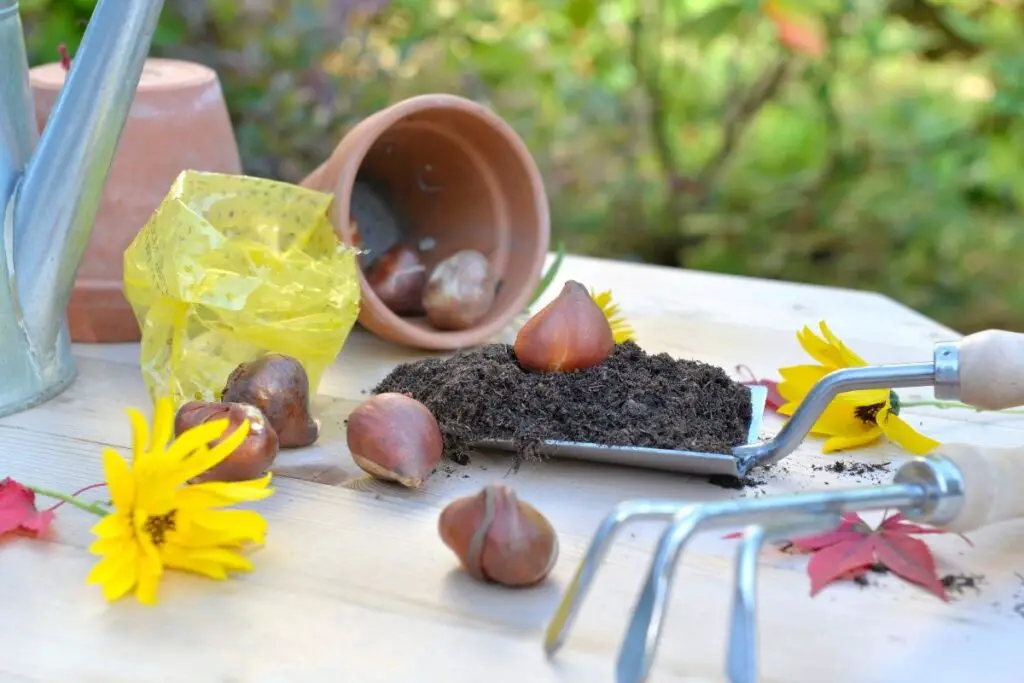
Tulip bulbs require chilling for 12-16 weeks before being planted in the fall months. It helps them to develop root growth and abundant flowering. The tulips will also need a cold temperature before they start flowering.
Your tulips have short stems means the bulbs did not get enough cold or enough chilling period. The length of the stem depends on their chilling period before their blooming.
While they receive this cold period, they release a hormone named gibberellic acid, which is a growth hormone. It helps the tulips to grow long stems.
If the tulips get a short cold period, gibberellic acid will not be produced, due to which the plant will not have long stems before the flowering.
Moreover, the stem length is also influenced by temperature in the weeks before the flower buds grow and open. Storing the bulbs at a warm temperature will result in a large quantity of nutrient absorption.
If the bulbs don’t get the ideal temperature, it’s not surprising to see the tulip stems shorter than their actual height.
It happens mostly when you purchase the bulbs. The purchased bulbs might not receive proper storage conditions.
Also read: What Temperature Do Tulips Need? (+Growing Them At Different Temperature)
Bad watering
In general, tulips don’t require much water compared to other plants. They only need water to remain evenly moist for thriving. But, for long stems, they require watering 3-4 weeks before the tulips are ready for flowering.
If the tulips don’t get enough water before flowering, the stems will not reach their actual height and result in short stems.
Watering depends on a lot of factors. The plant should be watered more during the drought, whereas if your region receives frequent rains, you can skip watering.
Watering the tulips during the summers can also make the tulip bed waterlogged as tulips remain dormant at that time. They will not accept any water, and further will rot the bulbs. This will make the new tulips have short stems.
Waterlogged conditions can result in fungal diseases in the plant, for example, Pythium root rot, causing the bulbs to rot. This is another reason why the tulips will have stunted growth and relatively shorter stems than their original size.
Planting the bulbs early will also result in fungal diseases. Planting the bulbs in the early spring, when it is raining, will rot the bulbs. If you have not watered the tulips for a long time, water them immediately with 1 inch of water.
But, if you have overwatered them, stop watering and add a layer of mulch, about 2 inches. Also, avoid early planting to avoid bulb rot by rains.
Also read: How To Save Overwatered Tulips? (Possible Signs, Causes & How To Fix)
Looking for gardening supplies? We have tested 100's of products before recommending them to you guys. Check out our best pick below:
| Image | Gardening Supplies | Best Price? |
|---|---|---|
 Top
Top Top
Top | Raised Garden Bed Kit | Check On Amazon |
 | XLUX Soil Moisture Meter, Plant Water Monitor, Soil Hygrometer Sensor for Gardening, Farming, Indoor and Outdoor Plants, No Batteries Required | No Results |
 Top
Top Top
Top | 82 Pcs Garden Tools Set and Extra Succulent Tools Set | Check On Amazon |
 | Joeys Garden Expandable Garden Hose with 8 Function Hose Nozzle, Lightweight Anti-Kink Flexible Garden Hoses, Extra Strength Fabric with Double Latex Core, (50 FT, Black) | No Results |
 Top
Top Top
Top | Dual Chamber Compost Tumbler | Check On Amazon |
 Top
Top Top
Top | Sunnyglade Plant Stakes | Check On Amazon |
 Top
Top Top
Top | Organic Cold Pressed Neem Seed Oil | Check On Amazon |
 Top
Top Top
Top | Mighty Mint Gallon :-Insect and Pest Control Peppermint Oil | Check On Amazon |
 Top
Top Top
Top | Scotts DiseaseEx Lawn Fungicide | Check On Amazon |
 Top
Top Top
Top | Jacks Classic 20-20-20 All Purpose Fertilizer | Check On Amazon |
 Top
Top Top
Top | 30,000 Seeds Pollinator Attracting Wildflower Mixture | Check On Amazon |
 Top
Top Top
Top | Survival Vegetable Seeds Garden Kit-Over 16,000 Seeds | Check On Amazon |
The variety got degenerated.
When tulips are grown successfully for long 2 to 3 years, they can get degenerated. There is a massive difference between tulips growing in their native land and tulips growing in our region, in our garden.
The growing conditions are very different. If your region receives too high temperatures or when the tulips don’t receive adequate water and fertilizer, it can degrade the bulb.
Generally, the purchased bulbs from any market will survive more or less for about 1 to 2 years without any replenishment and rejuvenation.
When the bulb degenerates, the plant doesn’t develop much as it used to initially. It is reasonably expected to see the tulips growing short stems and small blooms.
Planted too deep
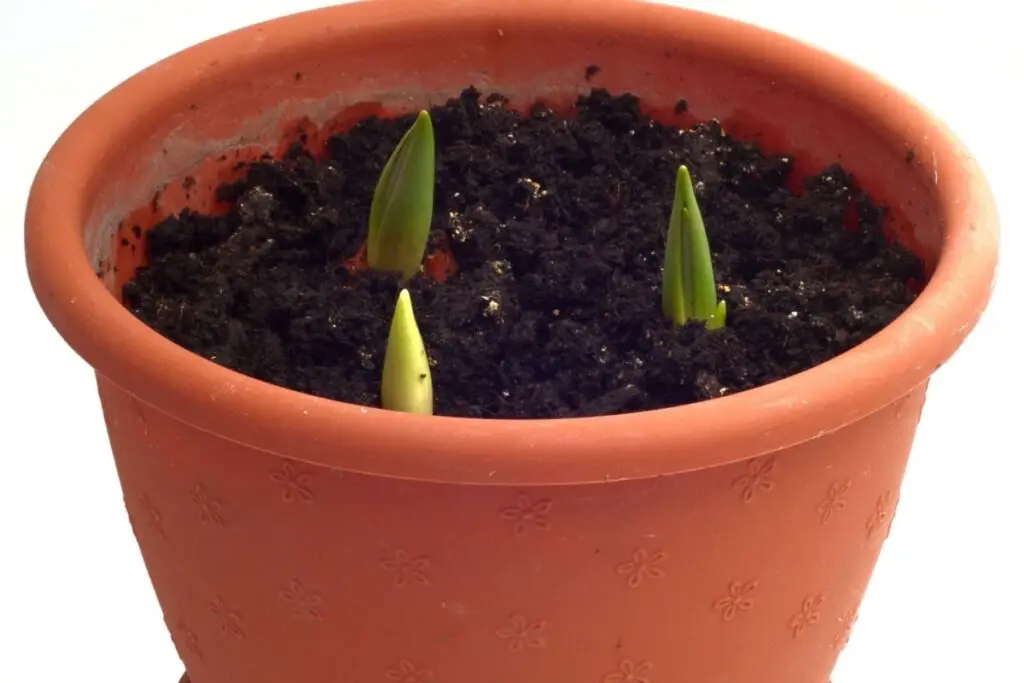
Generally, you should plant tulip bulbs about 6-8 inches deep into the soil bed. This is an ideal depth for them. The tulips will thrive, and the stems will also reach their actual height.
When you plant the bulbs too deep, the bulbs will take a lot of time to sprout out of the soil bed.
Besides, most of the stem will be under the ground, so the part of the stem above the soil bed will seem relatively small than its regular size.
Early tulips not growing proper stems.
The excellent time to plant tulip bulbs is in the fall because they will receive cold temperatures, encouraging good stem growth.
Even if the bulb gets this cold temperature, they are not getting the cold snap enough as required.
The common problem is global warming. This is the reason the early tulips can neither grow long stems nor can they flower properly.
Late planting
As I mentioned earlier, tulips need a cold temperature for the release of growth hormones. But, if they are planted too late in the fall months or experience warm temperatures in winter, they will fail to get a proper chilling period.
In such conditions, the stems will not grow in their actual height. They will grow much shorter than expected. This is the reason you should plant the bulbs in the fall.
Also read: When’s The Best Time To Plant Tulips? (+After Plant Care)
How can you prevent short stems in tulips?
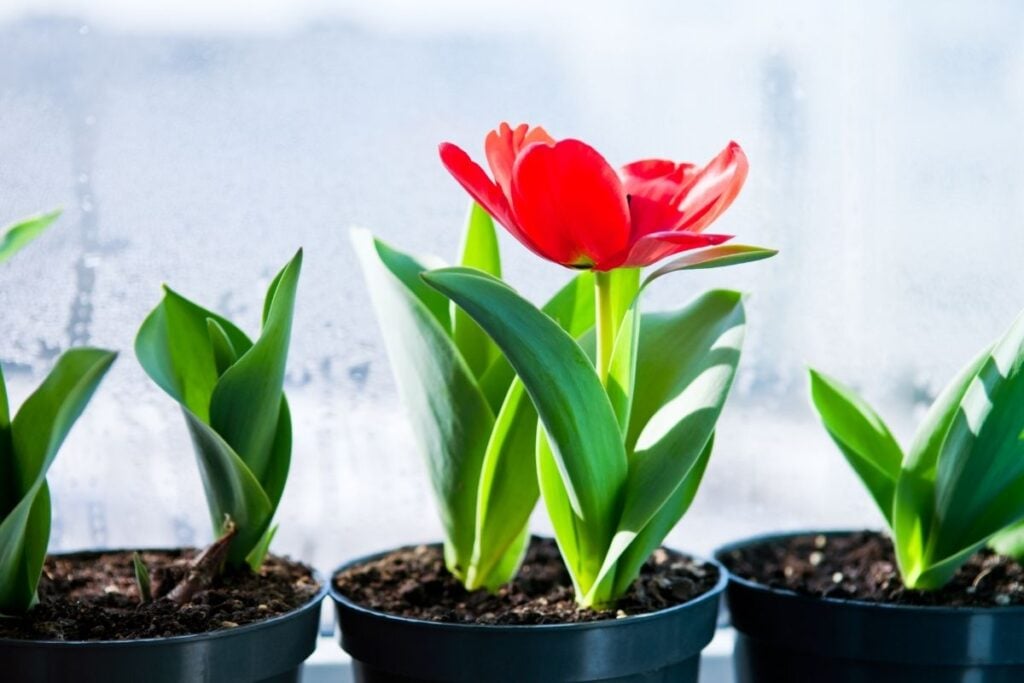
Though short stems in tulips are not much of a problem, if you want your tulips to have long stems, you can prevent them from growing short stems by the following few steps:
Grow the tall stem tulips
If you are not enjoying the short tulips and want more tall tulips, you can grow those kinds of species meant to produce tall stems.
The best choice for tall tulips would be the Darwin hybrids or the Ballerina hybrids. Make sure that you water them appropriately so that they don’t remain dry for long.
Besides, allow them to get the cold temperatures they need for their growth.
Plant the tulips in a well-drained soil bed
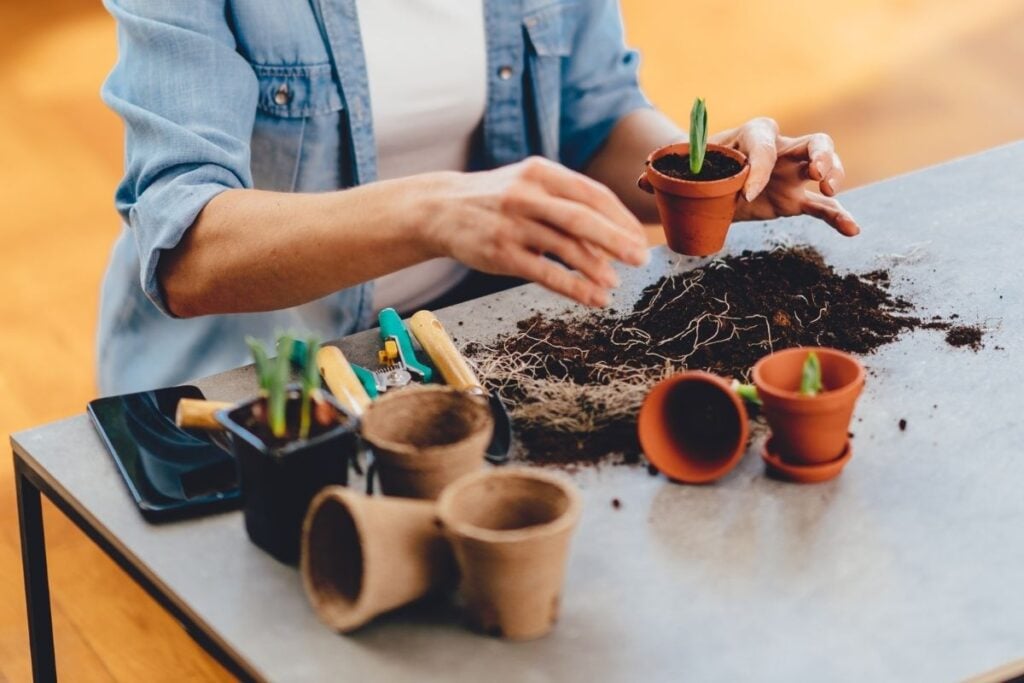
Make sure that the soil bed of the tulip planting site is relatively well-drained. They love loamy and sandy soil.
To avoid a soggy situation, dig up the whole soil bed instead of just digging up a hole for each bulb. This will allow the soil to drain the water well and aerate the soil.
Avoid clayey areas. If, by mistake, you have planted tulips in a clayey soil bed, add some sand or mulch to the soil bed to help absorb excess moisture.
Also read: What Kind Of Soil Is Good For Tulips? (Best Soil Mix)
Don’t let the soil remain dry for a long time.
Tulips require less amount of water. But, that doesn’t mean that they can tolerate drought. You should water them to keep the soil evenly moist. Don’t keep the soil bed dry for prolonged periods.
The frequency of water for tulips depends on many factors. You have to maintain the correct watering based on those factors.
Generally, the tulips should be watered once a week, that too when the top 2 inches of the soil bed dries out.
Sometimes, drought season can result in a dry tulip bed. In such conditions, the tulips need a little more water. When there is no rain in your living region, you will have to water the tulip bed every week so that the soil doesn’t remain dry for long.
You should also avoid waterlogging the soil bed by watering too much. That can cause fungal diseases in tulips.
You should water your tulip bulbs thoroughly at their planting time.
You must water your plant very well a few weeks before its anticipated flowering. Start at least 3-4 weeks before.
In this way, considering the different factors, you need to alter the watering routine for your tulips. Another thing you should remember about tulips is to avoid watering in the summers.
Tulips remain dormant in the summers. Watering the tulips will only give fungal diseases, another severe issue responsible for short tulip stems.
Also read: How Often Do Tulips Need To Be Watered? (Tulip Watering Needs )
Proper storage
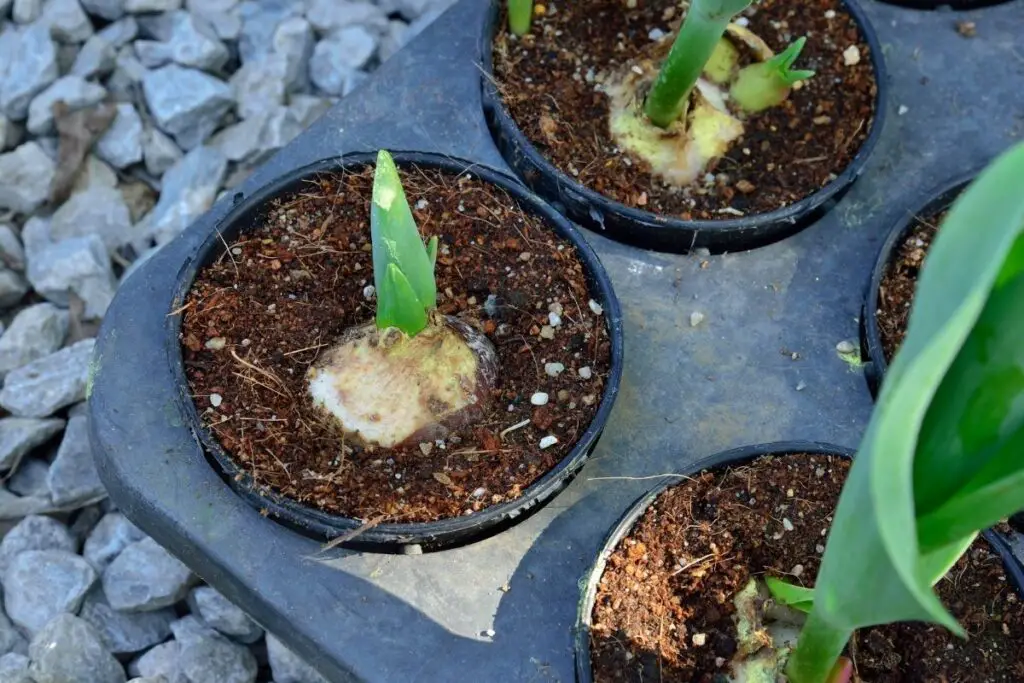
The tulip bulbs will require chilling for 12 to 15 weeks before they are being planted. This helps in good root growth and abundant flowering in the spring. Then, you should plant them in the autumn.
When you plant the bulbs in autumn, they will get cold weather in the coming winter. The tulips will require this cold temperature before their early spring blooming.
These cold temperatures help the tulips trigger the growth hormone gibberellic acid, responsible for long stem growth. You should maintain these temperatures for your tulips if you want the stems to be in their actual size and height.
Also read: When To Plant Tulips Seeds? (Guide As Per Your Zone)
Some key points to remember while growing tulips
- Keep the bulb in chilling temperatures before planting for 12 to 15 weeks. It helps in root growth and helps the bulbs for next year flowering.
- Tulips need cold temperature for a few weeks before blooming, 4 to 5 weeks approximate.
- During the dry summers, tulips remain dormant so avoid watering.
- Use well-drained, loamy, and sandy soil to avoid waterlogged conditions.
- Provide full sun daily for 6 hours to encourage photosynthesis, prolific flowering, green foliage, healthy developed stems, and abundant blooming.
- Deadheading. It helps the plant to concentrate more on gathering energy in bulbs and less focus on seeds.
These are some of the critical basic needs for tulips. If not met with these requirements, the plant will have to face many issues, short and stunted stems being one of them.
Final words
Tulips growing short stems is not much of a problem. Fixing them is very easy. The tulips growing short stems may or may not grow longer. It depends upon the plant and environmental factors.
If your region receives the type of temperature ideal for tulips, maybe they can grow longer stems. You must continue to take care of them to avoid shorter stems.
Try following the basic needs for tulips to see your garden filled up with colorful and perfect tulips every year.
Source: Wikipedia, North Dakota Stae University, The Royal Horticultural Society.
